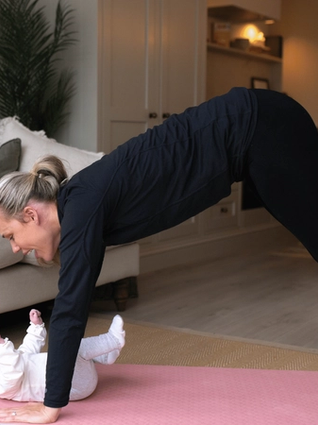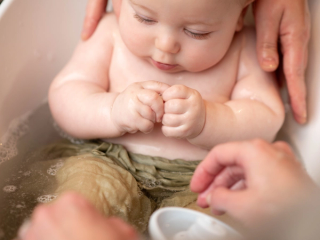
- Home
- Advice Hub
- Newborn
- New Parent Support
- Set Your Pelvic Floor Up For Success In The Future
How to set your pelvic floor up for success in the future?
These amazing group of muscles support your pelvic organs from underneath, it stops pee and poop coming out until we want it to, and it also plays a vital role in sexual function.
You may have heard your pelvic floor mentioned numerous times and nodded , along without really being sure what it’s all about. Or you may be struggling with symptoms and navigating your recovery.
Wherever you are at in your pelvic floor journey, we need to talk about it, because it really matters. This amazing group of muscles supports your pelvic organs from underneath; it stops pee and poop coming out until we want it to, and it also plays a vital role in sexual function. I know I’m biased as a Pelvic Health physio, but the choices you make now impact your pelvic floor’s ability to do all those things for the rest of your life. We need that pelvic floor in top condition when the hormonal changes of menopause begin. Pelvic floors are for life, ladies, not just for growing a baby!
Ok I’ll get off my soap box and assume you’re all enthusiastic pelvic floor pioneers. Here are some super simple tips that set you up for success:
1. Learn how to take a great diaphragmatic breath.
Our pelvic floor is intrinsically linked to our main breathing muscle, the diaphragm. The more our diaphragm can flatten down as we inhale, and arch back up as we exhale, the more our pelvic floor will move. This is essential to understand for good quality pelvic floor exercises.
2. If you don’t use it, you’ll lose it.
Pelvic floor exercises or kegels are an exercise that isolates just the pelvic floor muscles. This is a great way of checking your control and strength. But the pelvic floor rarely works in isolation in our actual lives. It gives a gentle contraction as we walk around with the baby on our hip trying to cook dinner, it gives a strong contraction as our abdominal muscles draw in for a powerful sneeze, it relaxes to give us enjoyable sex. We have to see pelvic floor health as a whole body issue, so learn how to strengthen the pelvic floor in whole body movements.
3. Don’t add more strain!
The pelvic floor has been given its job description and it doesn’t appreciate an increase in workload, like forcing out a dry ball of poo. If we cause chronic strain to these muscles then they will get overwhelmed and injured like any other muscle in the body. Here are 2 common causes of strain.
- Forcing out a poo – whether that’s because it’s really runny, very hard, you ignored the urge for an hour, or you only go twice a week. Sort your poo out and have a happier pelvic floor.
- Niggly chests and noses – coughing and sneezing are some of the most powerful actions your pelvic floor must control. If you’re coughing regularly you’re basically asking it to do multiple rounds of squat jumps every hour. It’s a tad unreasonable. If you have hayfever or a lingering cough, see your GP to make a treatment plan to get it under control.
4. Give it a strong support network.
The pelvic floor muscles are just a single group of muscles in that pelvis, there’s a whole neighbourhood of muscles in that area and they work better as a team. Developing great core strength by training the abdominal muscles helps to regulate abdominal pressure. The adductors, hamstrings, hip flexors and rotators all create balance and force that make the pelvic floors job easier.
It’s easy to forget postpartum that pregnancy caused us to get weaker everywhere, we can’t move as easily when heavily pregnant and need to rest early post partum. This strength doesn’t automatically return; you must exercise to build back up. I regularly see women in clinic who have done their Kegels religiously with no improvement in pelvic floor symptoms, but weakness elsewhere is the issue.
5. Nip issues in the bud
I want to empower you to help yourself, which is why I love writing these articles. We also need to know when to accept help from an expert. Our bodies are unique and therefore advice for you and your symptoms are vital. Don’t pass it off as ‘it only happens on the 2nd sneeze’ or ‘I just won’t go on the bouncy castle’. Intervening at the start is a lot easier than when a symptom has become more established. See a Pelvic Health Physiotherapist for physical therapy. You can do this through your GP or self-fund privately.
Advice & tips

Want to read more? Join the HiPP BabyClub for full access to this article.
As a BabyClub member, you'll get access to a range of exclusive benefits, including:
Monthly competitions
Discounts from our Partners
Expert advice tailored to your little one's age
Weaning recipes
HiPP shop discounts*
*10% off HiPP's online shop does not apply to our First Infant, Anti-Reflux or Comfort Formula Milk.
Important notice: Breastfeeding is best. Follow on milk should only be used as part of a mixed diet from 6 months. Talk to a healthcare professional.
















